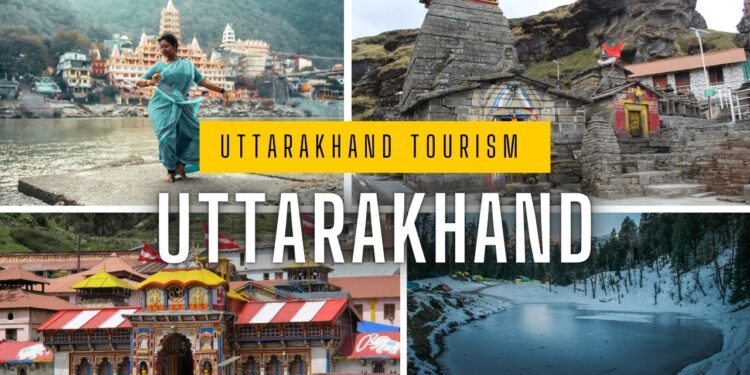Trekking in Uttarakhand: A Complete Guide for Nature Seekers
Trekking in Uttarakhand is not just about reaching summits—it’s about entering a world where each trail tells a story. Known for its raw terrain, spiritual touch, and snow-capped ranges, Uttarakhand has become one of India’s most genuine trekking destinations. Unlike manufactured vacation spots, this region holds a quiet strength in its deep forests, icy passes, and peaceful villages. Whether you’re new to hiking or have been walking trails for years, the experience of trekking in Uttarakhand brings clarity, resilience, and real connection to nature.
Why Trekking in Uttarakhand Feels Like a Natural Pull
Uttarakhand is made for walking. The land invites rather than demands. You don’t need to be a seasoned trekker to feel the rhythm of this place. The landscape moves from pine forests to alpine meadows to high-altitude glaciers, all within a few days’ walk.
People who try trekking in Uttarakhand often return for more, not because of social media or adventure bragging rights—but because the region lets them breathe deeper, walk slower, and think clearer. The connection is quiet but lasting.
Popular Routes for Trekking in Uttarakhand
Here are some treks that carry both challenge and meaning. Each has its own pace and personality.
1. Kedarkantha Trek
- Altitude: Around 12,500 ft
- Ideal For: Beginners and winter trekkers
- Season: December to April
- Highlights: Snowy pine forests, quiet sunrise at the summit, and well-defined trails.
Kedarkantha is a favorite for those starting their journey into trekking in Uttarakhand. The path is safe yet offers real moments of challenge, especially in the snow season.
2. Valley of Flowers Trek
- Altitude: Around 14,100 ft
- Ideal For: Nature and flora lovers
- Season: July to September
- Highlights: Rare Himalayan flowers, peaceful environment, and UNESCO recognition.
This trek is more than a walk—it’s a living canvas. Trekking in Uttarakhand during this season makes you feel like you’re walking through a quiet garden held up by mountains.
3. Har Ki Dun Trek
- Altitude: Around 11,500 ft
- Ideal For: Intermediate trekkers
- Season: March to June and September to December
- Highlights: Wooden bridges, slow rivers, and untouched villages.
This is one of the most meaningful treks for those who love the calm of solitude. It brings you close to the heritage of the local people and the raw beauty of Garhwal.
4. Roopkund Trek (Suspended Temporarily)
- Altitude: Around 16,000 ft
- Ideal For: Experienced trekkers
- Season: May to June, September to October
- Highlights: Mystery lake with human skeletons, high-altitude meadows.
This trail once attracted those who wanted to combine mystery and challenge. Though it’s currently not open to the public, Roopkund remains a reminder of how intense trekking in Uttarakhand can be.
5. Pindari Glacier Trek
- Altitude: Around 12,000 ft
- Ideal For: Beginners to intermediates
- Season: April to June and September to November
- Highlights: Glacial rivers, warm village hospitality, and gradual climbs.
This trail welcomes solo travelers and families alike. It has charm without the rush.
The Human Side of Trekking in Uttarakhand
Trekking in Uttarakhand is as much about the people as the paths. In remote villages, strangers offer you tea without expecting anything in return. Porters walk silently beside you, matching your pace even while carrying twice your load. Guides speak gently, pointing out things that most tourists would miss—like a broken prayer flag or a fox trail in the snow.
It’s these human moments that make trekking here less about “adventure” and more about quiet learning.
Challenges That Come with the Journey
Let’s be honest—trekking in Uttarakhand is not always easy. Weather can change in minutes. Steep climbs test your breath. At higher altitudes, even basic tasks take effort. And yes, there’s no comfort of city life—no Wi-Fi, no quick fixes.
But these very struggles are what create a real memory. When you walk past a steep patch or pitch your own tent in the cold, the sense of ability stays with you.
You won’t return the same.
What to Carry: Pack Light but Right
Here’s a real list. No fancy gear—just what works.
- Footwear: One pair of broken-in trekking shoes with ankle support
- Backpack: Lightweight, water-resistant, 50–60 liters
- Clothing: Layers are key (thermals, fleece, windproof jacket)
- Accessories: Woolen cap, gloves, trekking pole
- Essentials: Headlamp, power bank, basic medicine, energy bars
- Documents: ID, permits (if needed), emergency contacts
People new to trekking in Uttarakhand often overpack. Don’t. Each extra kilogram feels like ten after a few hours.
Food and Stay: Simple but Nourishing
You won’t find restaurant menus in most base villages or on the trail. Meals are usually local—rice, dal, vegetables, sometimes eggs. This food, cooked slowly and eaten warm, gives you the strength to go on.
Stay options range from homestays to tents to forest huts. It’s not luxury, but it’s more than enough. Often, it’s the calmest sleep you’ll get in years.
Solo or Group Trekking in Uttarakhand?
Both have their value.
Solo trekking offers stillness and freedom. You walk when you want. You sit without watching the clock. But it also comes with more risk—route confusion, injury, or altitude issues.
Group trekking brings safety, shared load, and people to talk to by the fire. Most first-timers prefer this route. If you’re unsure, start with a guided group and learn the rhythm of the land.
Eventually, if you feel ready, go solo. But never without informing someone.
Permits and Rules You Must Know
Trekking in Uttarakhand is regulated in many areas. Forest departments may require entry permits. Some trails have restricted zones due to wildlife or border proximity. Carry ID at all times, and respect every instruction given by local officials.
Also, never leave trash behind. This land doesn’t need plastic. It’s already full—with stories, air, and age-old silence.
When to Plan Trekking in Uttarakhand
The best season depends on your trek:
- Winter Treks (Dec–Mar): Kedarkantha, Dayara Bugyal
- Spring/Summer (Apr–Jun): Har Ki Dun, Pindari Glacier
- Monsoon (Jul–Aug): Valley of Flowers (only if prepared for wet trails)
- Autumn (Sep–Nov): All treks; clear skies and cool winds
Avoid planning during heavy rain or snow unless you’re experienced and fully prepared.
Respecting the Mountain Culture
Uttarakhand’s trails are often linked to local myths, spiritual beliefs, and ancient traditions. When trekking here, walk softly. Avoid loud behavior, follow dress modesty in villages, and always greet the locals with respect.
This isn’t just advice—it’s the way to receive real warmth and guidance from those who’ve lived with the mountains for generations.
Real Lessons from Trekking in Uttarakhand
Trekking in Uttarakhand teaches you things that city life rarely can:
- You are stronger than you think. When you’re out of breath but still climbing, you learn.
- Patience is a real skill. Walk at your pace, rest often, and don’t rush.
- Silence can be full. In forests with no noise, you hear your thoughts better.
- Nature doesn’t care for status. It treats all with the same sun, rain, and wind.
This is why so many return not for fun but for realignment.
Final Thoughts: Let the Trail Teach You
Trekking in Uttarakhand isn’t about finishing a checklist. It’s about starting a dialogue—with yourself, with nature, and with the land. You’ll leave your phone in your bag, your worries in the valley, and find something simpler at each turn.
The trails won’t shout. The snow won’t sparkle for effect. But if you’re quiet enough, they will welcome you into something real—and that’s more than most journeys offer.
















